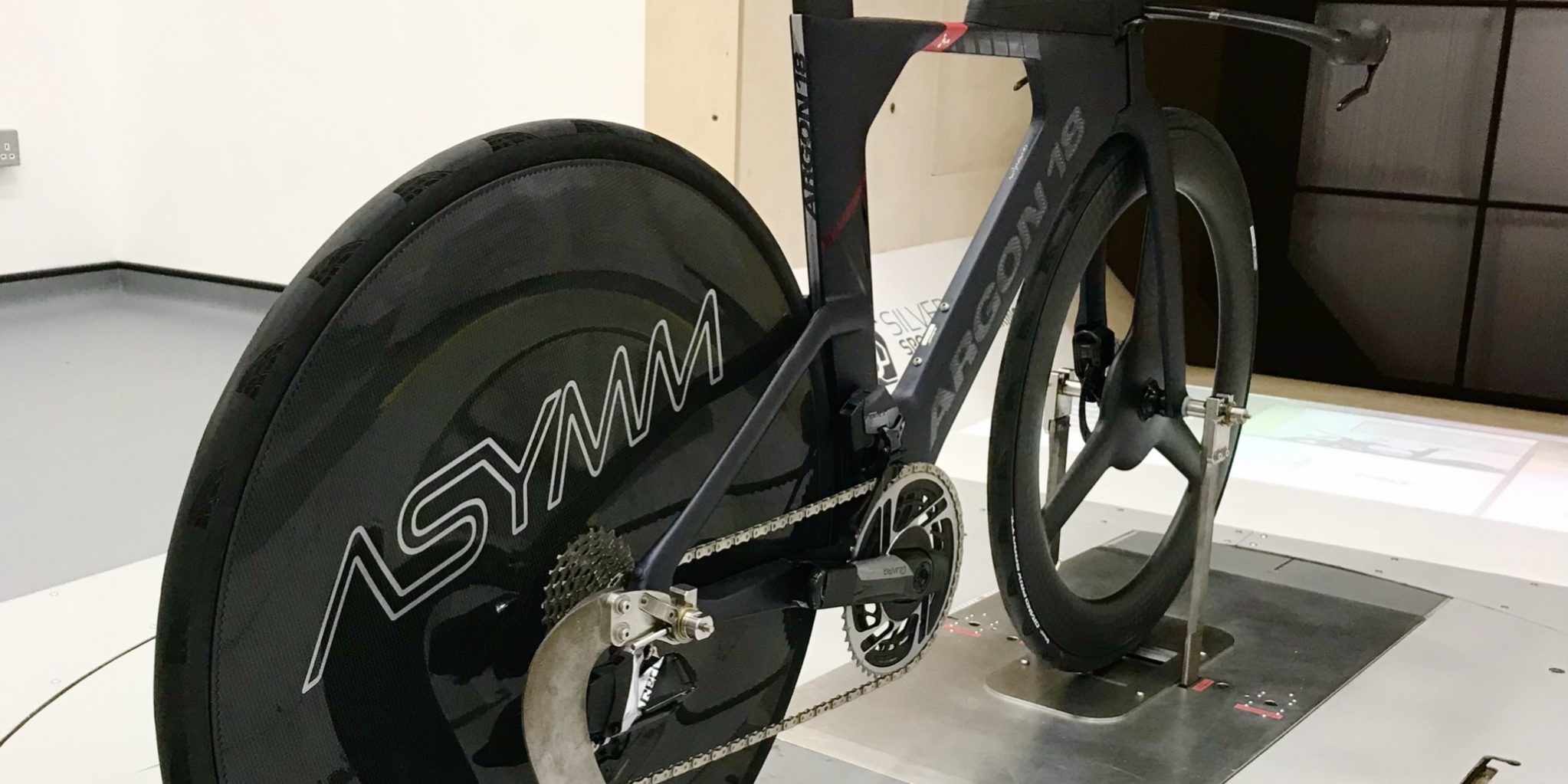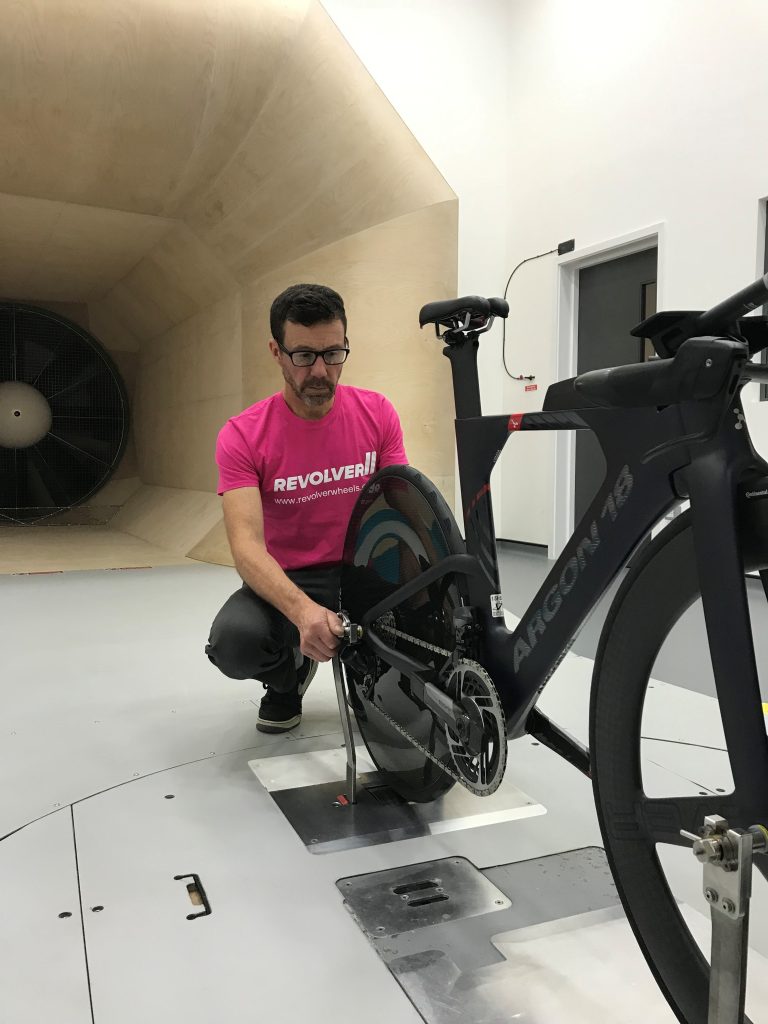In a very short space of time preferred tyre width has jumped from 23mm to 25mm to 28mm with the larger frame clearances offered by the latest DiscBrake TT/Tri bikes accommodating this switch comfortably in most cases. Inflated to their correct running pressures the rolling performance (Crr) of these different sizes is similar but the benefits of increased comfort, traction on imperfect road surfaces and handling are seen when choosing the wider 28mm tyre options.
So what’s the downside to making this switch? Well as you’d expect it’s the aerodynamic penalty created by the tyre being wider than the outer rim width at its interface, something often referred to as the lightbulb effect. For a tyre to sit at its stated width of 28mm it requires an inner hooked rim bed width of around 16mm to 17mm. This would typically mean the outer width on a typical carbon rim would measure around 23mm to 24mm leaving a tyre overhang of up to 5mm and increasing the watts required by up to 4 watts….ouch!
Our own Asymm disc wheel models don’t experience the big losses when making the jump up to 28mm tyres seeing penalties as low as zero in certain conditions but average figures over a wide range of yaw see penalty ranges from 0.3 watts at 40kph to 1.3 watts at 60kph. Therefore for Project 28 our benchmark test wheel would be the Asymm Turbulate which features our XWide rim, one of the widest out there measuring 21mm inner / 28mm outer, seating a Continental 5000 28mm tyre at 29.5mm actual width. At this point it’s worth stating that the Asymm Turbulate already records the lowest drag figures we have ever tested so it was always going to be difficult to find anything greater than a marginal gain at this level.
Going down the obvious route the first task was to determine the point at which our 28mm tyre would sit at the same width as the wheel’s outer rim at the interface. As the rim width increases to eliminate the lightbulb effect the tyre also increases in width but at a smaller rate. We determined that the rim needed to have a 24mm inner track width and a 30.5mm outer to seat the tyre at 30.5mm also. This is extremely wide, the widest Disc wheel we know of but still accommodating to most new disc brake TT/Tri frames. Given our asymmetrical profile concept has been validated as the most effective, we made the minor mold changes necessary to accommodate the wheel dish differences created by the wider outer rim. All to do now was to build the prototype, fit the tyre and get that all important tunnel data.
So was Project 28 a success? Well… yes and no.
The results showed 0 – 0.25w improvement over our benchmark Asymm Turbulate testing at +/- 0-20 degree yaw @ 50kph and 60kph which we would pretty much consider margin of error. At this stage we’re making the assumption that the perfect tyre to rim interface of the prototype is canceled out by the wider overall system. So that’s that…well not quite. If you’re taking the decision to step up to 28mm tyres it’s likely to be for increased comfort and greater traction over imperfect road surfaces. The 28’s give the increased internal tyre volume running at lower pressures that deliver this so here’s the good news. As the prototype (AsymmMax) has such a wide rim bed it seats an inflated 25mm Continental 5000 at 28.75mm, wider than a 28mm tyre sits on a Zipp Super 9 Disc. You are now effectively running a 25 that feels and performs like a 28, a virtual 28 if you like, with adjusted pressures of course. Our outdoor field testing is confirming this, so using this rationale you’ve gained the benefits you were looking for without actually switching and paying that marginal aero penalty. If you were to still go ahead and use the 28mm tyre you’re now effectively going to feel like you’re running a 30mm + tyre. Maybe that’s the future….who knows!
Conclusion
Asymm Turbulate 25mm tyre vs AsymmMax 25mm tyre – Aerodynamically equal but the AsymmMax will deliver the benefits seen with a 28mm tyre.
Asymm Turbulate 28mm tyre vs AsymmMax 25mm tyre – The Max will be marginally aerodynamically superior with similar rolling performance.
Asymm Turbulate 28mm tyre vs AsymmMax 28mm tyre – Aerodynamically equal but the AsymmMax will feel even more comfortable, if more was ever needed?
Asymm Turbulate
Asymm Turbulate
You can find our more about our Asymm Turbulate at https://www.revolverwheels.co.uk/shop/disc-brake-wheels/revolver-aysmm-turbulate-disc-brake/







